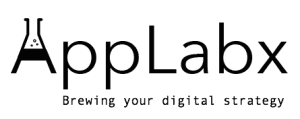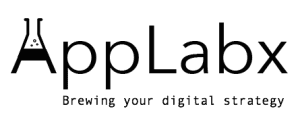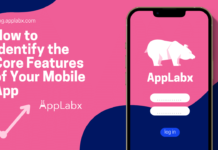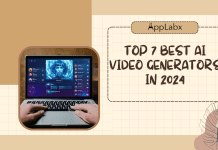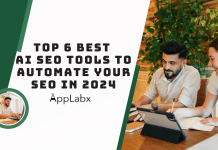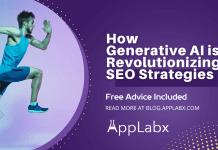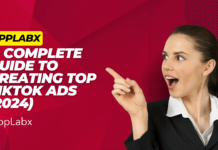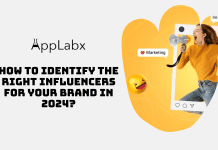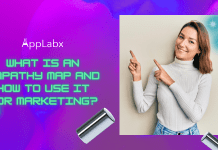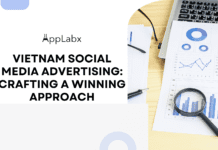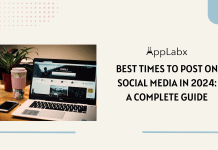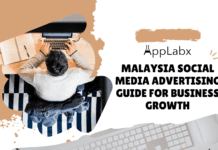Key Takeaways
- Inbound marketing in 2025 focuses on AI-powered personalization, content experiences, and consent-based data strategies.
- Building a full-funnel approach with smart automation drives sustainable lead generation and customer retention.
- Staying ahead of future trends like conversational marketing and zero-click SEO ensures long-term competitive advantage.
As the digital landscape continues to evolve at a rapid pace, businesses in 2025 face both unprecedented opportunities and complex challenges. Consumers are more empowered than ever, equipped with the tools to research, compare, and make informed decisions without ever engaging with a sales representative. Traditional push-based marketing tactics—like cold calling, intrusive pop-up ads, and irrelevant email blasts—are no longer sufficient to win attention, build trust, or drive long-term conversions. In this new reality, inbound marketing has emerged as the most powerful and sustainable approach to attracting, engaging, and delighting customers.

Inbound marketing is not a trend—it’s a strategic methodology grounded in value-driven engagement and customer-centric communication. At its core, inbound marketing focuses on creating and distributing content that is aligned with the interests and needs of your ideal buyers. It helps brands connect organically through blog posts, videos, social media, SEO, email automation, and more—all while nurturing leads through a well-defined funnel that delivers measurable results. In a time when consumers are tuning out noise and craving authenticity, inbound marketing represents the future of brand building and revenue growth.
In 2025, the importance of a robust inbound strategy is amplified by several key shifts in the digital ecosystem. Artificial intelligence is transforming content creation and personalization. Google’s evolving search algorithms are prioritizing user experience, semantic intent, and high-quality, relevant information. Social media platforms continue to dominate attention, but the way users interact with content is changing—making it essential for brands to deliver tailored, value-rich messaging at just the right moment. Meanwhile, privacy regulations and increasing ad fatigue are pushing marketers toward more ethical, permission-based engagement models—principles that align perfectly with the inbound approach.
This blog post serves as your complete blueprint for building a sustainable inbound marketing strategy in 2025. Whether you’re a small business owner, a B2B marketer, or a marketing executive overseeing a large team, this guide will walk you through the frameworks, tools, and best practices needed to succeed in the current environment. From creating SEO-optimised content hubs and automating email workflows, to leveraging first-party data and optimizing the customer journey across all touchpoints—you’ll learn how to build a system that not only attracts leads but also converts them into lifelong brand advocates.
Inbound marketing in 2025 isn’t about casting the widest net—it’s about building smart, scalable, and data-informed strategies that meet your audience where they are, and deliver consistent value across every stage of the buyer’s journey. This guide is designed to give you clarity in a noisy marketplace, and help you craft a high-performing inbound engine that fuels sustainable growth well into the future.
Let’s dive in.
But, before we venture further, we like to share who we are and what we do.
About AppLabx
From developing a solid marketing plan to creating compelling content, optimizing for search engines, leveraging social media, and utilizing paid advertising, AppLabx offers a comprehensive suite of digital marketing services designed to drive growth and profitability for your business.
AppLabx is well known for helping companies and startups use Inbound Marketing to drive web traffic to their websites and web apps.
At AppLabx, we understand that no two businesses are alike. That’s why we take a personalized approach to every project, working closely with our clients to understand their unique needs and goals, and developing customized strategies to help them achieve success.
If you need a digital consultation, then send in an inquiry here.
Inbound Marketing Strategy 2025: Your Complete Blueprint for Sustainable Growth
- Understanding the Core of Inbound Marketing
- Key Pillars of a Winning Inbound Strategy in 2025
- Building Your 2025 Inbound Marketing Funnel
- Tools and Technologies Powering Inbound Marketing in 2025
- How to Measure Inbound Marketing Success
- Challenges and Pitfalls to Avoid in 2025
- Future Trends in Inbound Marketing
1. Understanding the Core of Inbound Marketing
Inbound marketing is not just a methodology—it is a mindset that reshapes how businesses connect with audiences in today’s digital-first environment. At its core, inbound marketing is about attracting potential customers through relevant and helpful content, engaging them meaningfully, and ultimately delighting them into becoming promoters of your brand. In this section, we explore the foundational principles, evolution, and real-world applications of inbound marketing in 2025.
What Is Inbound Marketing?
Inbound marketing is a pull strategy that focuses on drawing prospects in by offering solutions to their problems through content, SEO, social media, and automation.
Key Features of Inbound Marketing
- Customer-Centric: Prioritizes buyer needs and preferences
- Permission-Based: Builds relationships through value, not interruption
- Content-Driven: Uses educational, engaging content to guide decisions
- Long-Term Focus: Builds brand equity and organic reach over time
The Inbound Flywheel Model
The flywheel replaces the traditional marketing funnel and focuses on creating momentum through continuous customer delight.
| Stage | Objective | Methods Used |
|---|---|---|
| Attract | Bring in the right audience | Blogging, SEO, Social Media, Video Marketing |
| Engage | Build relationships & trust | Lead Magnets, Email Nurturing, Webinars, Chatbots |
| Delight | Provide exceptional experience | Personalization, Support, Post-Purchase Content |
Inbound vs. Outbound Marketing (2025 Comparison)
Inbound and outbound are fundamentally different approaches. Here’s how they compare in today’s landscape:
| Feature | Inbound Marketing | Outbound Marketing |
|---|---|---|
| Approach | Value-driven, pull strategy | Attention-seeking, push strategy |
| Communication | Two-way, conversational | One-way, promotional |
| Cost Efficiency | High ROI over time | Often high cost with diminishing returns |
| Tools Used | Blogs, SEO, CRM, Social, Email Automation | TV ads, Cold Calls, Direct Mail, Display Ads |
| Consumer Perception | Helpful, trustworthy | Interruptive, less trusted |
| Adaptability (2025) | AI-driven personalization, scalable | Harder to personalize at scale |
Example:
- A SaaS startup builds a blog that addresses common industry pain points and ranks for niche keywords. Over 12 months, they reduce their CAC by 38% compared to paid search.
Why Inbound Marketing Works in 2025
Inbound is particularly powerful in the current digital ecosystem due to several converging trends:
1. AI and Automation
- Predictive content suggestions based on user behavior
- AI chatbots for real-time engagement
- Smart segmentation in email marketing tools
2. Search Engine Evolution
- Google prioritizes experience, expertise, authoritativeness, and trustworthiness (E-E-A-T)
- Voice and visual search optimization becoming essential
- Zero-click searches push brands to optimize for SERP features
3. Privacy and Trust
- Inbound aligns with GDPR and first-party data strategies
- Builds authentic connections through storytelling and transparency
4. Changing Buyer Behavior
- 70%+ of B2B buyers consume 3–7 pieces of content before talking to a salesperson
- Self-service and on-demand education dominate the buyer journey
Core Components of Inbound Marketing
1. Buyer Personas
- Semi-fictional representations of ideal customers
- Based on real data, surveys, CRM insights
Example Template:
| Persona Name | Job Title | Goals | Challenges | Preferred Content Type |
|---|---|---|---|---|
| Growth Gavin | Marketing Director | Increase lead quality by 30% | Aligning sales & marketing | Webinars, Case Studies |
2. Content Strategy
- Pillar and cluster model to target topic authority
- Mix of formats: blogs, ebooks, videos, whitepapers
Content Type Matrix:
| Funnel Stage | Content Types | Purpose |
|---|---|---|
| TOFU | Blog Posts, Videos, Infographics | Attract new visitors |
| MOFU | Case Studies, Webinars, Email Courses | Educate and build trust |
| BOFU | Demos, Free Trials, Pricing Guides | Convert and close leads |
3. SEO and Discoverability
- Keyword strategy based on search intent
- On-page SEO: meta titles, structured data, alt text
- Technical SEO: page speed, mobile optimization, crawlability
4. Lead Generation and Conversion Paths
- Use of CTAs, landing pages, and forms
- Offer valuable lead magnets (checklists, templates)
5. CRM and Marketing Automation
- Email workflows triggered by behavior (e.g., downloads, visits)
- Lead scoring to prioritize high-intent users
- Tools: HubSpot, ActiveCampaign, Mailchimp, ConvertKit
Inbound Marketing Funnel Framework
While the flywheel is the new model, the funnel remains useful for visualizing lead progression.
Three-Stage Funnel Breakdown:
| Funnel Stage | User Intent | Tactics Used | KPIs to Track |
|---|---|---|---|
| TOFU | Awareness | Blogging, SEO, Social Ads | Traffic, CTR, Bounce Rate |
| MOFU | Consideration | Case Studies, Email Nurturing, Retargeting | Time on Site, Form Fills |
| BOFU | Decision | Demos, Consultations, Free Trials | Conversion Rate, MQL/SQL |
Conclusion: Mastering the Core Sets the Foundation
A deep understanding of the core principles of inbound marketing sets the stage for sustainable growth in 2025 and beyond. By aligning content with buyer intent, leveraging automation, optimizing for organic discovery, and nurturing leads through value-based engagement, businesses can build a self-sustaining ecosystem that consistently attracts, converts, and delights customers. The next step is to translate this understanding into a practical strategy—one that integrates tools, metrics, and creativity to form a complete inbound blueprint.
2. Key Pillars of a Winning Inbound Strategy in 2025
To build a successful inbound marketing strategy in 2025, businesses must focus on a connected ecosystem of channels, tactics, and technologies. Inbound is no longer limited to blogging and email—it has evolved into a strategic framework powered by intelligent content, automation, and deep personalization. Below are the essential pillars that drive measurable and sustainable results in the modern digital landscape.
Content Marketing: The Engine of Inbound
Content is the foundation of inbound strategy. In 2025, it must be strategic, multimedia-rich, and AI-enhanced.
Core Tactics
- Create pillar pages supported by content clusters for better topic authority.
- Mix content types: long-form blogs, short-form videos, podcasts, ebooks, and interactive quizzes.
- Use AI tools (like Jasper, Copy.ai, or ChatGPT) to generate content at scale with consistency and tone.
Examples
- A fintech company creates a pillar page on “Small Business Loans in 2025,” supported by blog clusters on eligibility, tax implications, and interest trends.
- An edtech startup runs a podcast series interviewing educators, ranking in Apple and Spotify charts while boosting brand authority.
Content Type vs. Funnel Stage Matrix
| Funnel Stage | Content Type | Purpose | CTA Example |
|---|---|---|---|
| TOFU | Blog posts, Infographics | Drive awareness | Subscribe to newsletter |
| MOFU | Case studies, Webinars | Educate and build trust | Download comparison guide |
| BOFU | Demos, Pricing sheets | Convert and drive decisions | Request a free consultation |
SEO and Organic Discovery
SEO in 2025 is driven by semantic search, user intent, and Google’s AI-powered algorithms. Technical health and content quality are non-negotiable.
Core Tactics
- Optimize for E-E-A-T: Experience, Expertise, Authoritativeness, Trust.
- Focus on long-tail, question-based keywords and zero-click searches.
- Improve Core Web Vitals, especially mobile load time and visual stability.
- Structure content with FAQ schema, HowTo markup, and rich snippets.
Examples
- A DTC skincare brand ranks for “best vegan moisturizers for oily skin” by writing a 2000-word comparison blog and optimizing schema.
- A SaaS platform secures a featured snippet by answering a direct question with structured subheadings and bullets.
SEO Readiness Checklist
| SEO Element | Description | 2025 Priority |
|---|---|---|
| Mobile Optimization | Fast-loading, responsive UX | High |
| On-Page SEO | Titles, meta descriptions, alt tags | High |
| Semantic Keywords | Related keyword phrases and user intent | Very High |
| Structured Data Markup | FAQ, Article, Review schema | High |
| Content Freshness | Up-to-date stats, trends, and insights | Medium |
| Internal Linking | Builds authority and UX | High |
Email Marketing and Automation
In 2025, email marketing remains one of the highest ROI channels, especially when layered with behavioral triggers and AI-driven personalization.
Core Tactics
- Segment lists based on lifecycle stage, engagement history, and purchase behavior.
- Create dynamic content blocks within emails personalized to user personas.
- Automate drip campaigns for onboarding, cart recovery, upselling, and re-engagement.
- Use predictive analytics to send emails at optimal times.
Examples
- An ecommerce brand sends an abandoned cart email with personalized product recommendations and urgency-driven offers.
- A B2B SaaS company uses a lead scoring model to trigger demo invites once users engage with 3+ key resources.
Popular Automation Tools
| Tool | Best For | Notable Feature |
|---|---|---|
| HubSpot | End-to-end automation | Visual workflow builder |
| ActiveCampaign | SMB automation and CRM | Predictive sending and win probability |
| Mailchimp | Email marketing for startups | AI subject line optimization |
| Klaviyo | E-commerce automation | Deep Shopify integration |
Social Media Integration
Social media is no longer just about presence—it’s about real-time engagement, thought leadership, and community building.
Core Tactics
- Build platform-specific content strategies (short videos for TikTok, thought leadership for LinkedIn).
- Use social listening tools to monitor conversations and respond proactively.
- Incorporate UGC (User-Generated Content) to build trust and increase conversions.
- Promote gated content or events to move followers into the inbound funnel.
Examples
- A fitness brand runs a TikTok series answering fitness myths, gaining 500K followers and traffic spikes to related blog posts.
- A legal tech firm runs LinkedIn polls and live webinars targeting general counsel decision-makers.
Engagement Metrics by Platform (2025 Projections)
| Platform | Avg. Engagement Rate | Ideal Content Type | Primary Audience |
|---|---|---|---|
| 2.8% | Industry insights, carousels | B2B professionals | |
| 1.9% | Reels, behind-the-scenes | Millennials, Gen Z | |
| TikTok | 5.4% | Short-form, educational | Gen Z, Creators |
| YouTube | 4.1% | How-tos, expert interviews | All demographics |
Lead Generation and Nurturing
Effective lead generation is about value exchange—offering something meaningful in return for contact details. Nurturing ensures these leads convert and stay loyal.
Core Tactics
- Develop high-value lead magnets (e.g., templates, toolkits, mini-courses).
- Use progressive forms to reduce friction and gather data incrementally.
- Implement lead scoring based on activity, source, and intent.
- Align sales and marketing with Service Level Agreements (SLAs).
Examples
- A marketing agency offers a “2025 Content Calendar Template” in exchange for email signup and nurtures leads with a 5-part email series.
- A cybersecurity firm scores leads based on webinar attendance and ebook downloads, triggering personalized BOFU email sequences.
Lead Magnet Ideas Matrix
| Format | Use Case | Funnel Stage |
|---|---|---|
| Checklist | Quick wins, action items | TOFU |
| Ebook | In-depth exploration | MOFU |
| Calculator Tool | ROI or budget estimation | MOFU |
| Free Demo | Product validation | BOFU |
| Case Study | Proof of success | BOFU |
Integrating All Pillars into a Unified Strategy
Inbound success in 2025 comes from alignment across all pillars. Each pillar reinforces the other, forming a compound growth loop that increases in momentum over time.
Connected Strategy Flow:
- Attract via SEO + Social Media →
- Convert via Content + Lead Magnets →
- Nurture via Email + Automation →
- Delight via Personalized Experiences →
- Amplify via Social Proof + Reviews
Example:
- A digital product company:
- Attracts traffic with a top-ranking blog.
- Converts readers into leads via a gated template.
- Nurtures them with an educational email series.
- Converts them with a free trial offer.
- Retains and delights them with loyalty rewards and referral campaigns.
Conclusion: Pillars That Power Predictable Growth
Each pillar of inbound marketing in 2025—from content creation to email automation—serves a specific purpose, but it’s their integration that fuels consistent, scalable, and sustainable growth. By aligning these pillars into a unified strategy, businesses can respond to user intent, deliver value at every touchpoint, and build brand loyalty that compounds over time.
3. Building Your 2025 Inbound Marketing Funnel
Creating a high-performing inbound marketing funnel in 2025 is no longer just about linear lead capture and conversion. It’s about crafting dynamic, intent-driven, and data-informed pathways that attract, engage, and delight prospects at every touchpoint. The modern funnel is an ecosystem where personalization, automation, and buyer intent converge to guide leads from awareness to advocacy.
This section breaks down each stage of the 2025 inbound funnel, including funnel models, content types, engagement strategies, and KPIs. You’ll also find visual matrices, examples, and frameworks to help you architect a funnel that supports sustainable growth.
Understanding the Inbound Funnel Framework
The 2025 inbound funnel includes three core stages—Top of Funnel (TOFU), Middle of Funnel (MOFU), and Bottom of Funnel (BOFU)—and now extends beyond conversion to include Retention and Advocacy. The funnel integrates with the inbound flywheel, which emphasizes continuous momentum through customer delight.
Modern Inbound Funnel Model
| Funnel Stage | Objective | Content Focus | Key Metrics |
|---|---|---|---|
| TOFU | Attract prospects | Educational, keyword-rich | Traffic, CTR, Bounce Rate |
| MOFU | Engage and educate leads | Trust-building content | Time on Page, Downloads |
| BOFU | Convert high-intent leads | Sales-aligned, persuasive | Demo Requests, Lead-to-Close % |
| Retention | Retain and re-engage customers | Onboarding, feature tips | Churn Rate, Repeat Purchases |
| Advocacy | Turn customers into promoters | Referral, loyalty content | NPS, Referrals, Reviews |
Top of Funnel (TOFU): Attract and Educate
This stage is all about building awareness and attracting potential customers by offering solutions to their problems.
Key Tactics
- Create SEO-optimised blog content targeting informational keywords.
- Share thought leadership through podcasts, social media, and video shorts.
- Publish infographics, industry statistics, and trend reports.
Best Performing Content Types
- How-to guides
- Listicles
- Beginner’s educational videos
- Industry news recaps
- Ultimate resource roundups
Example
A B2B CRM company creates a blog titled “Top 10 Lead Generation Strategies for B2B Companies in 2025,” optimized for the keyword “lead generation B2B 2025.”
TOFU Performance Metrics
- Organic traffic growth
- Time on page
- Social shares and impressions
- Keyword rankings
Middle of Funnel (MOFU): Nurture and Convert Interest
Once visitors are familiar with your brand, MOFU content deepens the relationship and builds trust. This stage focuses on converting engaged visitors into qualified leads.
Key Tactics
- Develop lead magnets such as ebooks, templates, and gated tools.
- Use email drip campaigns to nurture leads over time.
- Launch webinars and virtual events with expert speakers.
High-Impact Content Types
- Comparison guides (e.g., “HubSpot vs Salesforce: Which Is Better for SMBs?”)
- Whitepapers
- Webinar replays
- Customer stories
- ROI calculators
Example
A marketing agency offers a downloadable “2025 Marketing Funnel Template” gated behind a form and sends a 4-part email series educating leads on how to implement it.
MOFU Engagement Matrix
| Channel | Content Format | Lead Magnet Example |
|---|---|---|
| Email Marketing | Nurture sequences | “Free 7-Day Funnel Building Crash Course” |
| Retargeting Ads | Video ads, testimonials | Client case study retargeting viewers |
| Webinars | Live Q&A | “How to Scale with Inbound in 2025” |
MOFU Performance Metrics
- Form submissions
- Email open and click rates
- Webinar attendance
- Time spent engaging with gated content
Bottom of Funnel (BOFU): Convert and Close
At this stage, your goal is to convert qualified leads into customers by providing clear value propositions, proof, and incentives.
Key Tactics
- Offer free trials, demos, or consultations.
- Create landing pages optimized for conversion with urgency-driven CTAs.
- Share detailed product comparisons and ROI case studies.
Effective Content Types
- Case studies
- Live demos
- Pricing pages
- Customer testimonials
- Product walkthrough videos
Example
A SaaS cybersecurity platform sends leads a product comparison guide and offers a 14-day free trial with a personalized onboarding call.
BOFU Conversion Strategy Chart
| BOFU Offer Type | Use Case | CTA Example |
|---|---|---|
| Free Trial | SaaS, subscription platforms | “Start Your 14-Day Free Trial” |
| Consultation Call | B2B services, agencies | “Book Your Free Strategy Call” |
| Pricing Sheet Download | Enterprise tools | “Get Your Custom Quote” |
| Product Demo Video | All product-based businesses | “Watch How It Works” |
BOFU KPIs
- Demo or trial sign-ups
- Conversion rate from MQL to SQL
- CAC (Customer Acquisition Cost)
- Sales cycle length
Retention: Keep Customers Engaged
Retention is a critical, often-overlooked layer of the inbound funnel. Satisfied customers drive lifetime value (LTV) and are easier to sell to again.
Key Tactics
- Onboarding email sequences
- Feature update announcements
- Loyalty rewards or VIP offers
- Satisfaction surveys and NPS tracking
Retention Email Examples
- “Getting the Most from Your First Month”
- “5 New Features You Should Try This Week”
- “Your Exclusive Loyalty Upgrade Awaits”
Metrics to Monitor
- Customer churn rate
- Repeat purchase rate
- Support ticket trends
- Product usage frequency
Advocacy: Turn Users into Promoters
A well-built funnel doesn’t end at the sale. Customers can become your most powerful marketing asset when nurtured properly.
Key Tactics
- Referral programs and affiliate incentives
- Customer review and testimonial outreach
- Featuring user-generated content (UGC)
- Hosting customer appreciation events or webinars
Example
A project management platform offers $100 account credit for every successful referral and promotes top referring users on their monthly leaderboard.
Advocacy Metrics
- Referral conversion rate
- Online reviews (Google, G2, Capterra)
- Net Promoter Score (NPS)
- UGC mentions and reach
2025 Funnel Optimization Tools
| Tool | Function | Funnel Stage |
|---|---|---|
| HubSpot | Full-funnel CRM & automation | All |
| Unbounce | Landing page A/B testing | BOFU |
| ConvertKit | Email automation for creators | MOFU/Retention |
| Google Looker Studio | Funnel performance dashboards | All |
| Hotjar | On-site behavior heatmaps | TOFU/MOFU |
Visual Funnel Map: 2025 Inbound Funnel Flow
lessCopyEdit ┌────────────────────┐
│ TOFU │
│ Blog | SEO | Video │
└────────┬───────────┘
▼
┌────────────────────┐
│ MOFU │
│ Webinars | Lead │
│ Magnets | Drip Email│
└────────┬───────────┘
▼
┌────────────────────┐
│ BOFU │
│ Case Studies | Demos│
└────────┬───────────┘
▼
┌────────────────────┐
│ Retention │
│ Onboarding | Support│
└────────┬───────────┘
▼
┌────────────────────┐
│ Advocacy │
│ Reviews | Referrals│
└────────────────────┘
Conclusion: Funnel Architecture Drives Predictable Growth
Your 2025 inbound marketing funnel must be strategic, dynamic, and integrated across platforms. From awareness to advocacy, each stage should deliver value, reduce friction, and reinforce trust. By mapping the right content and engagement strategies to each funnel stage, and using real-time data to optimize performance, businesses can create an engine that delivers qualified leads and long-term growth at scale.
4. Tools and Technologies Powering Inbound Marketing in 2025
Inbound marketing in 2025 is increasingly automated, AI-driven, and integrated. Marketers no longer rely solely on traditional tools like email marketing software or CRMs. Instead, they operate within an ecosystem of advanced technologies that streamline customer journeys, personalize content at scale, and optimize every touchpoint based on real-time data.
This section explores the essential tools and technologies shaping inbound strategies in 2025—categorized by function, use case, and integration potential. Whether you’re a solo founder or managing a multi-person marketing team, these platforms can significantly enhance your inbound performance.
Marketing Automation Platforms (MAPs)
Marketing automation is the backbone of scalable inbound campaigns in 2025. The right MAP can streamline lead nurturing, audience segmentation, A/B testing, and multi-channel delivery.
Core Features
- Automated workflows and behavior-based triggers
- Email personalization and segmentation
- Integration with CRM and analytics platforms
- Lead scoring and lifecycle tracking
Top Tools
| Tool | Best For | Key Feature | Integration |
|---|---|---|---|
| HubSpot | All-in-one marketing automation | Smart content personalization | Native CRM |
| ActiveCampaign | SMBs needing deep automation | Conditional automation paths | Shopify, WooCommerce |
| Pardot (Salesforce) | B2B Enterprises | AI-powered lead scoring and ROI reports | Salesforce |
| Marketo | Complex B2B funnel strategies | Multi-touch attribution | Adobe Suite |
Example
A SaaS company uses ActiveCampaign to trigger an automated email sequence when a visitor downloads a product comparison guide, tailoring the emails to industry vertical and firm size.
Customer Relationship Management (CRM) Systems
CRMs in 2025 go beyond contact management—they serve as centralized hubs that unify sales, marketing, and customer success.
Core Functions
- Store detailed lead, prospect, and customer data
- Track interactions across multiple channels
- Integrate with sales pipelines and automation tools
- Enable personalized, data-informed outreach
Top CRMs for Inbound Marketers
| CRM | Unique Strength | Ideal For |
|---|---|---|
| HubSpot CRM | Free, intuitive, deeply integrated | Startups, mid-sized teams |
| Salesforce | Customization and enterprise scaling | Large B2B organizations |
| Zoho CRM | Budget-friendly with AI tools | SMBs |
| Pipedrive | Visual sales pipelines | Sales-focused teams |
Example
An edtech startup uses HubSpot CRM to segment contacts by funnel stage, then aligns email content and sales calls accordingly, boosting MQL-to-SQL conversion rate by 28%.
AI and Machine Learning Technologies
AI has become integral to modern inbound workflows, enabling marketers to analyze patterns, predict user behavior, and personalize at scale.
AI-Powered Capabilities
- Predictive lead scoring
- Smart content recommendations
- Chatbots for 24/7 support
- Automated copywriting and content generation
AI Tools by Use Case
| Use Case | Tool Example | Function |
|---|---|---|
| Copywriting | Jasper, Copy.ai | Generate blog intros, CTAs, product copy |
| Email optimization | Seventh Sense | Send-time personalization |
| On-site chat | Drift, Intercom | AI-driven chatbots with dynamic routing |
| Predictive analytics | MadKudu, Infer | Lead scoring based on behavior and firmographics |
Example
An ecommerce brand integrates Drift on its product pages to offer personalized help based on browsing behavior, increasing on-site conversions by 19%.
Search Engine Optimization (SEO) Tools
SEO remains a critical inbound driver. In 2025, tools must support semantic search, AI-powered suggestions, and zero-click optimization.
Core Capabilities
- Topic clustering and keyword research
- Technical SEO audits and schema markup
- SERP feature tracking
- Competitor analysis and backlink tracking
Top Tools
| Tool | Feature Highlight | Best Use Case |
|---|---|---|
| Semrush | All-in-one platform with AI writers | Agencies and content teams |
| Ahrefs | Strong backlink and keyword data | Link-building and competitor analysis |
| Surfer SEO | Content editor with NLP optimization | On-page content optimization |
| Screaming Frog | Deep technical SEO crawling | Technical audits |
Example
A healthtech blog uses Surfer SEO to optimize an article for semantic relevance, ranking #1 for multiple long-tail keywords within 30 days.
Content Creation and Management Tools
Content remains at the heart of inbound. Tools in 2025 support collaboration, multimedia creation, and AI-assisted workflows.
Tool Categories
- CMS platforms
- AI content generation
- Visual and video design
- Content scheduling
Popular Tools and Platforms
| Tool | Primary Function | Ideal For |
|---|---|---|
| WordPress + Elementor | Website and blog management | Content-heavy inbound sites |
| Notion | Collaborative content planning | Teams managing editorial calendars |
| Canva Pro | Visual content creation | Fast graphics, social media visuals |
| Descript | Video and podcast editing | Repurposing webinar and video content |
Example
A content team uses Notion to organize blog ideas by funnel stage, integrates Canva for featured images, and repurposes webinar content via Descript for YouTube and social.
Analytics and Attribution Tools
Inbound success depends on data-driven decision making. Modern tools allow marketers to track, attribute, and forecast campaign performance with high precision.
Key Metrics Tracked
- Funnel stage conversion rates
- Channel ROI
- LTV:CAC ratios
- Engagement and bounce rates
Top Analytics Tools
| Tool | Strength | Usage in Inbound Funnel |
|---|---|---|
| Google Looker Studio | Custom data dashboards | Visualizing multi-channel data |
| Heap | Behavior analytics without manual tagging | Tracking in-product actions |
| HubSpot Analytics | Integrated lead-to-sale tracking | Aligning content with revenue |
| Wicked Reports | Multi-touch attribution modeling | Measuring long funnel conversions |
Example
A DTC apparel brand uses Wicked Reports to identify that email nurtures, not Facebook Ads, are driving most high-value purchases, adjusting budget allocation accordingly.
Social Media Management Tools
Social platforms are key inbound touchpoints. Tools in 2025 prioritize AI-powered scheduling, engagement tracking, and cross-platform publishing.
Functionality Checklist
- Smart posting schedules based on audience engagement
- Sentiment analysis
- UGC curation and republishing
- Influencer tracking
Recommended Tools
| Tool | Key Feature | Best Fit For |
|---|---|---|
| Buffer | Post scheduling and calendar view | Solo marketers, startups |
| Hootsuite | Multi-platform scheduling and inbox | Growing businesses |
| Sprout Social | Advanced engagement analytics | Agencies, enterprise brands |
| Later | Visual planner for Instagram/TikTok | Creatives and ecommerce |
Example
A fashion brand uses Later to auto-publish reels during peak engagement hours, gaining 2x impressions without increasing manual posting effort.
Emerging Tech Trends in Inbound Marketing (2025)
Key Technologies on the Rise
- Customer Data Platforms (CDPs): Tools like Segment aggregate user data across platforms for 1:1 personalization.
- Voice Search Optimization: Tools now help optimize content for smart assistants and voice-driven queries.
- Augmented Reality (AR): Increasing use of AR in product demos and immersive TOFU content.
- AI-Powered Video Tools: Generative video tools like Sora or Synthesia enable scalable, personalized explainer videos.
Example
A furniture brand uses AR to let users preview how products would look in their room, increasing session time and reducing return rates.
Conclusion: Technology as a Strategic Multiplier
The tools powering inbound marketing in 2025 enable scalability, personalization, and real-time optimization. From content creation and automation to analytics and customer experience, these technologies turn marketing from guesswork into a precise, data-backed engine for sustainable growth. The right tech stack depends on your funnel stage, team size, industry, and budget—but investing in the right tools now is the fastest path to long-term inbound success.
5. How to Measure Inbound Marketing Success
Measuring the success of your inbound marketing strategy in 2025 requires a data-driven, multi-metric approach that spans the entire customer journey. Inbound marketing is not just about traffic—it’s about engagement, conversion, retention, and ROI. To fully understand performance, businesses need to go beyond vanity metrics and measure real indicators of growth.
This section outlines the most critical metrics, KPIs, and frameworks used to evaluate inbound marketing performance effectively. It also includes practical tools, dashboards, and real-world examples to guide ongoing optimization.
Define Inbound Marketing Objectives Before Measuring
Before jumping into metrics, define the specific goals for each campaign or funnel stage.
Common Inbound Goals
- Increase qualified traffic to landing pages
- Boost email list growth via lead magnets
- Convert leads to MQLs and SQLs
- Increase customer retention and LTV
- Improve ROI on content and automation
Goal Mapping Table
| Funnel Stage | Objective | Success Indicator |
|---|---|---|
| TOFU | Drive awareness and engagement | Organic traffic, social shares |
| MOFU | Capture and nurture leads | Form fills, content downloads |
| BOFU | Convert leads into customers | Demo bookings, conversions, MQL to SQL |
| Retention | Retain and grow customer base | NPS, LTV, repeat purchases |
Key Metrics to Track in Inbound Marketing
1. Website & Content Performance Metrics
These measure how well your top-of-funnel (TOFU) content attracts and engages visitors.
- Organic Traffic: Number of visitors from search engines
- Tool: Google Search Console, Ahrefs
- Example: A blog optimized for “best project management tools 2025” drives 10,000 monthly visitors from Google.
- Bounce Rate & Time on Page: Indicators of content relevance and experience
- Tool: Google Analytics 4
- Ideal Target: Bounce rate <50%, Time on page >90 seconds
- Pages per Session: Signals user interest in exploring more
- Tool: GA4, Hotjar
- Benchmark: 2–3 pages/session is a healthy average
2. Lead Generation Metrics
Monitor the effectiveness of gated content, forms, and CTAs.
- Conversion Rate (Visitor to Lead)
- Formula: Leads ÷ Total Visitors × 100
- Benchmark: 1–3% is typical; >5% is excellent
- Lead Quality (MQL/SQL Rate)
- Use lead scoring to assess quality
- Tool: HubSpot, Marketo
- Example: A B2B SaaS firm identifies 40% of ebook downloads as MQLs
3. Email Engagement Metrics
Email remains core to inbound nurturing. Key KPIs include:
- Open Rate: Average in 2025 is 21–27%
- Click-Through Rate (CTR): Benchmark is 2–5%
- Unsubscribe Rate: Should be <0.5%
- Tool: Mailchimp, ActiveCampaign
4. Funnel Conversion Metrics
Tracking movement from one funnel stage to the next is critical.
| Stage Transition | KPI | Good Benchmark |
|---|---|---|
| Visitor → Lead | Lead Conversion Rate | 2–5% |
| Lead → MQL | MQL Qualification Rate | 30–50% |
| MQL → SQL | SQL Conversion Rate | 60–75% |
| SQL → Customer | Close Rate | 15–30% |
Example: A SaaS company sees a 40% MQL-to-SQL conversion after redesigning their lead nurture emails.
5. Customer Retention and Loyalty Metrics
Long-term inbound success is tied to LTV and repeat engagement.
- Customer Lifetime Value (LTV)
- Formula: Avg. purchase × Purchase frequency × Avg. retention period
- Goal: Grow LTV over time with education, upsells, content
- Customer Acquisition Cost (CAC)
- Formula: Total inbound cost ÷ New customers
- Use Case: Optimize for channels with lowest CAC-to-LTV ratio
- Net Promoter Score (NPS)
- Tool: Delighted, AskNicely
- Example: An inbound-focused edtech platform uses NPS surveys to refine onboarding content
ROI and Attribution Models
Inbound success must be quantifiable in financial terms. Use attribution and ROI models to evaluate which content and channels deliver revenue.
Attribution Models in 2025
- First-Touch Attribution: Credit goes to the first interaction
- Last-Touch Attribution: Credit goes to the final interaction before conversion
- Multi-Touch Attribution (Recommended): Distributes credit across key touchpoints
- Tools: HubSpot, Google Analytics 4, Wicked Reports
Inbound ROI Formula
plaintextCopyEditROI = (Revenue Attributed to Inbound – Cost of Inbound) ÷ Cost of Inbound × 100
Attribution Chart Example
| Touchpoint | Weight (%) | Value Contribution |
|---|---|---|
| Blog Post | 20% | $800 |
| Ebook Download | 30% | $1,200 |
| Webinar Attendance | 25% | $1,000 |
| Sales Demo | 25% | $1,000 |
| Total Revenue | 100% | $4,000 |
Marketing Dashboard Essentials
To monitor performance in real-time, build an inbound dashboard using tools like Google Looker Studio or HubSpot Analytics.
Key Dashboard Elements
- Total website visitors (YoY growth)
- Content piece performance (traffic, leads, bounce rate)
- Lead pipeline breakdown (MQLs, SQLs, Customers)
- Email engagement
- Channel-wise ROI (SEO, social, email)
- Customer retention and churn rate
Sample Metrics Dashboard (2025)
| Metric | This Month | Last Month | Trend |
|---|---|---|---|
| Organic Traffic | 18,500 | 16,200 | ▲ +14.2% |
| Leads Generated | 920 | 810 | ▲ +13.6% |
| Lead-to-MQL Conversion | 47% | 42% | ▲ +5% |
| MQL-to-SQL Conversion | 63% | 60% | ▲ +3% |
| Email CTR | 3.4% | 2.9% | ▲ +0.5% |
| LTV:CAC Ratio | 4.3:1 | 3.8:1 | ▲ Improved |
Tools to Track Inbound Success
| Tool | Purpose | Key Benefit |
|---|---|---|
| HubSpot | All-in-one inbound analytics | Attribution, funnel reporting |
| Google Analytics 4 | Web + content performance | Behavioral data, conversions |
| Hotjar/Clarity | UX & engagement tracking | Heatmaps, scroll-depth, session replays |
| Looker Studio | Custom dashboards | Cross-platform reporting |
| Wicked Reports | Multi-touch attribution for ROI | Precise channel credit assignment |
| Segment | CDP for user data unification | Personalized, data-rich campaigns |
Best Practices for Measuring Inbound Effectively
- Set SMART goals per campaign and funnel stage
- Track leading (visits, engagement) and lagging (revenue, retention) metrics
- Benchmark regularly and adjust strategy based on trends
- Use multi-touch attribution to avoid misleading channel data
- Align metrics with sales and customer success to measure full-funnel impact
Conclusion: Metrics Drive Momentum
Inbound marketing in 2025 is only as effective as your ability to measure and act on the right data. The metrics above provide a full-funnel view of how your content, automation, and engagement strategies drive real business outcomes—from traffic to revenue. Invest in the right tools, build a data-first culture, and use this feedback loop to continually optimize your inbound marketing engine.
6. Challenges and Pitfalls to Avoid in 2025
As inbound marketing becomes more advanced, so do the challenges and potential pitfalls that can derail growth, reduce ROI, or damage brand authority. In 2025, marketers must navigate a complex digital landscape shaped by AI, data privacy regulations, evolving user behavior, and algorithm updates.
This section explores the most pressing inbound marketing challenges in 2025—paired with examples, mitigation strategies, and helpful charts or matrices. Whether you’re scaling your content strategy or refining your funnel automation, understanding these pitfalls is critical to sustaining inbound success.
1. Over-Reliance on AI Without Human Oversight
Key Issues
- AI-generated content can feel generic or lack brand voice
- Over-automation reduces personalization
- AI may misinterpret context, tone, or cultural nuances
Common Pitfalls
- Publishing large volumes of AI-written blogs with poor engagement
- Using chatbots without human fallback options
- Relying on auto-personalized emails that sound robotic
Example
A SaaS company auto-generates 100 blog posts with an AI tool, but they receive low dwell time and high bounce rates due to repetitive phrasing and unclear value propositions.
Mitigation Strategies
- Use AI for first drafts or outlines, not final content
- Blend automation with manual QA and editorial review
- Ensure chatbots escalate complex queries to live reps
- Regularly train AI tools on brand-specific datasets
AI Usage Matrix (2025)
| Use Case | Ideal Use of AI | Needs Human Review? |
|---|---|---|
| Blog Drafting | Outline & SEO optimization | Yes |
| Email Personalization | Subject lines, segments | Yes |
| Chatbots | FAQ & lead routing | Yes |
| Video Scripts | Initial ideation | Yes |
| Social Captions | Variants for A/B tests | Yes |
2. Content Saturation and Keyword Cannibalization
Key Issues
- Too much similar content targeting the same keyword
- Internal competition leads to loss in SERP rankings
- Google’s AI-based ranking favors topic depth over volume
Example
A fintech blog publishes 5 articles targeting “best digital banks,” causing keyword overlap and rank volatility.
Pitfalls to Avoid
- Publishing multiple short-form blogs with the same focus
- Ignoring content clustering or pillar strategies
- Not consolidating or pruning outdated posts
Solutions
- Use topic clusters and content maps
- Consolidate low-performing or overlapping content
- Focus on depth, originality, and internal linking
Content Strategy Table
| Content Practice | Good in 2025? | Notes |
|---|---|---|
| Publishing high-volume blogs weekly | No | Focus on quality and uniqueness |
| Pillar + Cluster Model | Yes | Improves internal linking and topical authority |
| Republishing old blogs | Yes | Update stats, re-optimize for 2025 trends |
| Keyword Cannibalization Audit | Yes | Use Semrush or Ahrefs to spot conflicts |
3. Inconsistent Lead Qualification Criteria
Symptoms
- Sales blames marketing for poor leads
- MQLs do not convert to SQLs
- Wasted resources on unqualified traffic
Example
A B2B company defines all ebook downloaders as MQLs. Sales discovers only 15% match the target buyer profile.
Pitfalls
- No alignment between marketing and sales teams
- Ignoring firmographics or intent signals in lead scoring
- Relying solely on form submissions for qualification
Remedies
- Co-develop MQL and SQL definitions with sales
- Use tools like Clearbit or MadKudu to enrich leads
- Add behavior-based scoring (page views, demo interest)
Lead Scoring Framework
| Attribute | Score Weight | Example Criteria |
|---|---|---|
| Job Title | 30 | Decision-maker titles |
| Company Size | 20 | 50–500 employees |
| Website Interactions | 30 | Viewed pricing page or 2+ blogs |
| Content Downloaded | 20 | Whitepaper or product guide |
| Threshold for MQL | — | 70 points minimum |
4. Underestimating Data Privacy and Compliance Risks
Rising Regulations in 2025
- GDPR (EU), CPRA (California), PDPA (Singapore), LGPD (Brazil), and evolving AI governance laws
- Fines for non-compliance or misuse of personal data are stricter and higher
Risks
- Collecting data without explicit consent
- Inadequate data encryption or storage protocols
- Ignoring cookie compliance and tracking transparency
Example
An ecommerce store is fined for using remarketing pixels without opt-in, losing customer trust and 20% of traffic overnight.
Best Practices
- Use consent management platforms (OneTrust, Cookiebot)
- Ensure opt-ins are double-confirmed and clearly worded
- Avoid sending emails without verified permission
- Regularly audit third-party tools for data compliance
Compliance Matrix
| Regulation | Affects Users In | Requires Opt-In? | Consent Management Needed? |
|---|---|---|---|
| GDPR | EU | Yes | Yes |
| CPRA | California (US) | Yes | Yes |
| PDPA | Singapore | Yes | Yes |
| LGPD | Brazil | Yes | Yes |
5. Misaligned Multi-Channel Strategies
Symptoms
- Mixed messaging across email, blog, social, and ads
- No clear funnel progression per channel
- Inconsistent tone, offer timing, or targeting
Example
A SaaS brand’s Facebook ads promote a free trial, but their email automation pushes for a demo—causing confusion and friction.
Pitfalls
- No centralized campaign calendar or channel strategy
- Operating in silos between content, social, and email teams
- Inconsistent CTAs or lead capture goals
Remedies
- Use tools like Notion, Asana, or Monday.com to align campaign calendars
- Map each content piece to a single funnel goal
- Regular cross-team reviews to unify messaging
Channel Alignment Matrix
| Channel | Goal | CTA Example | Funnel Stage |
|---|---|---|---|
| Blog | Educate | Download guide | TOFU |
| Email Nurture | Convert | Book a demo | MOFU |
| LinkedIn Ads | Attract MQLs | View case study | MOFU |
| YouTube Webinar | Establish authority | Sign up for masterclass | TOFU → MOFU |
6. Ignoring Voice, Video, and Visual Content
2025 Consumer Shifts
- Over 50% of search queries are voice-based
- TikTok and YouTube remain top discovery platforms
- Static blog-only strategies limit engagement
Example
A travel brand relying solely on blog content misses out on 200,000+ monthly impressions from video search.
Pitfalls
- No video/audio version of high-performing blogs
- Not repurposing webinar or podcast content
- No schema markup for voice-rich results
Solutions
- Convert top blog posts into explainer videos or shorts
- Launch a branded podcast series for mid-funnel nurturing
- Add FAQ schema and HowTo markup to content
7. Poor Attribution and Inbound ROI Clarity
Consequences
- Inbound seems underperforming when attribution is inaccurate
- Budget cuts to effective channels
- Misguided campaign scaling
Example
A B2B firm uses last-click attribution and fails to credit SEO blogs that nurtured leads for weeks.
Pitfalls
- Relying solely on Google Analytics
- Ignoring multi-touch and time decay models
- No UTM parameter tracking or campaign IDs
Solutions
- Use multi-touch attribution platforms (Wicked Reports, HubSpot Pro)
- Tag all links with UTM codes
- Compare CAC vs. LTV across inbound channels
Attribution Comparison Table
| Model Type | Strength | Weakness |
|---|---|---|
| First-Touch | Good for awareness campaigns | Misses downstream influence |
| Last-Touch | Simple to track | Ignores earlier touchpoints |
| Linear | Fair split | May over-credit light touchpoints |
| Time Decay | Prioritizes recent interactions | Can undervalue TOFU content |
| Data-Driven (AI) | Most accurate (GA4, HubSpot Pro) | Requires volume + setup effort |
Conclusion: Staying Ahead by Avoiding Common Pitfalls
Inbound marketing in 2025 is no longer about executing more—it’s about executing smarter. Avoiding the pitfalls above requires ongoing optimization, team alignment, and the courage to refine what’s not working. As AI, data privacy, and user preferences continue to evolve, successful inbound strategies will be agile, compliant, and customer-first.
7. Future Trends in Inbound Marketing
Inbound marketing is evolving rapidly as technology advances, consumer expectations shift, and digital ecosystems grow more sophisticated. To stay competitive and drive sustainable growth, marketers must anticipate what’s next and align their strategies accordingly. This section explores the emerging future trends shaping inbound marketing beyond 2025, with practical insights, real-world examples, and strategic guidance.
1. AI-Driven Hyper-Personalization at Scale
Overview
Artificial Intelligence is transforming how brands interact with audiences by delivering personalized experiences tailored to user behavior, intent, and preferences—across every touchpoint.
Key Trends
- AI models predicting content preferences and timing
- Real-time dynamic website personalization
- Machine learning-driven A/B testing and UX optimization
Example
Netflix-style content personalization applied to blogs: HubSpot uses AI to tailor blog recommendations and CTAs based on user journey stage and previous interactions.
Applications
- Email campaigns adapting copy based on past open behavior
- Landing pages altering headlines in real-time per user profile
- Chatbots recommending specific content paths or products
Personalization Maturity Model
| Stage | Characteristics | Tools Used |
|---|---|---|
| Basic | Static emails and default CTAs | Mailchimp, Constant Contact |
| Intermediate | Segment-based personalization | HubSpot, ActiveCampaign |
| Advanced | Behavioral + predictive personalization | Mutiny, Dynamic Yield, Segment |
| AI-Driven | Real-time, intent-based, adaptive experiences | Clearbit, Adobe Sensei, ChatGPT API |
2. Content as an Experience (CX) Over Information
Overview
The future of inbound content isn’t just about delivering knowledge—it’s about delivering immersive, interactive, and contextual experiences that engage users more deeply.
Key Features
- Interactive content (quizzes, calculators, product finders)
- Immersive formats (AR/VR explainers, 3D models)
- Micro-content: snackable videos, stories, carousels
Example
A cybersecurity firm creates a gamified quiz that walks users through a simulated attack scenario, converting 38% of participants into leads.
High-Impact Interactive Content Types
| Format | Engagement Purpose | Tool Examples |
|---|---|---|
| Quizzes | Lead generation, segmentation | Outgrow, Typeform |
| ROI Calculators | Bottom-of-funnel conversion | Ceros, SnapApp |
| Interactive Videos | Mid-funnel engagement | Vidyard, Wistia |
| Augmented Reality | Product education | 8th Wall, Zappar |
3. Conversational Inbound: The Rise of Chat-Centric Funnels
Overview
With the adoption of generative AI and NLP models, conversational marketing is becoming a core pillar of inbound funnels—moving users down the funnel via intelligent, human-like interactions.
Key Trends
- AI chatbots that guide users to relevant content or solutions
- Voice-enabled search and content accessibility
- Real-time lead qualification via chat
Example
Drift uses AI bots to qualify leads, schedule demos, and deliver ebooks—resulting in a 30% faster sales cycle.
Voice and Chat-First Strategies
- Optimize blogs and landing pages for voice search keywords
- Deploy conversational UIs that mimic human interaction
- Train AI models on industry-specific vocabulary and buyer psychology
4. Decentralized Content and Community-Led Growth
Overview
Brand-owned content is now competing with creator- and community-driven content. The future lies in empowering micro-influencers, user-generated content, and private communities to drive trust and inbound success.
Key Strategies
- Build communities on platforms like Slack, Discord, Circle
- Collaborate with micro-creators to co-create content
- Feature UGC and testimonials across website and campaigns
Example
Notion’s ambassador program fuels thousands of tutorials and use cases on YouTube, Reddit, and Discord—organically boosting inbound acquisition.
Decentralized Content Strategy Matrix
| Tactic | Platform | Primary Benefit |
|---|---|---|
| Creator collaborations | YouTube, LinkedIn | Authority & reach |
| Community-generated tutorials | Reddit, Discord, Slack | Trust & peer validation |
| Branded community hubs | Circle, Tribe | Retention & feedback loop |
| UGC testimonials and reviews | Instagram, TikTok | Social proof & conversion |
5. AI-Powered Search and Zero-Click Results
Overview
Search behavior is changing. Users are receiving answers directly from SERPs (Search Engine Results Pages) or AI engines, reducing clicks and demanding a rethink of how inbound captures attention.
Emerging Trends
- Google’s SGE (Search Generative Experience)
- Bing Chat and Perplexity AI disrupting traditional SEO
- Rise of no-click and voice responses
Example
Ahrefs shows that over 50% of Google searches result in zero-clicks—meaning users get answers without visiting any site.
Strategic Adjustments
- Optimize for featured snippets, FAQ schema, and zero-click visibility
- Build multi-format content: visual + text + audio + video
- Publish on third-party platforms like LinkedIn Articles or Medium
Zero-Click SEO Optimization Table
| Technique | Implementation Tool | Outcome |
|---|---|---|
| Featured Snippet Targeting | SEMrush, Surfer SEO | Increased visibility |
| FAQ Schema Markup | Rank Math, Yoast | Voice & AI search compatibility |
| Branded Knowledge Panels | Google My Business, Wikidata | Authority & brand visibility |
| Structured Data (HowTo) | Schema.org, JSON-LD | Rich results in AI-powered search |
6. Predictive Analytics and Journey Orchestration
Overview
Instead of reacting to what users have done, marketers in the future will predict what users will do next, enabling seamless journey orchestration across channels.
Use Cases
- Anticipating content needs by stage or intent
- Predicting churn or likelihood to convert
- Timing outreach based on behavioral trends
Tools & Technologies
- Salesforce Einstein
- Adobe Experience Platform
- Segment + Customer.io integrations
Example
An edtech company uses historical behavior data to predict when users are likely to convert and schedules email nudges during those high-intent windows—boosting demo sign-ups by 22%.
7. Data Ethics, Consent-First Marketing, and Privacy Tech
Future Landscape
With ongoing tightening of global data regulations (e.g., ePrivacy, AI Act, CPRA), the inbound marketing of the future must be transparent, ethical, and privacy-first.
Key Trends
- First-party and zero-party data collection
- Consent-based personalization
- Privacy-focused analytics and ad tools
Example
Mozilla’s inbound strategy uses cookie-free tracking and empowers users to control how their data is used—earning trust and stronger brand loyalty.
Privacy Tech Toolkit
| Purpose | Tool Examples |
|---|---|
| Consent Management | OneTrust, Cookiebot |
| Zero-Party Data Capture | Jebbit, Typeform |
| Privacy Analytics | Plausible, Fathom |
| Encrypted CRM Solutions | Proton CRM, Zoho |
Conclusion: Preparing for the Future of Inbound
The future of inbound marketing will be shaped by intelligence, interactivity, trust, and integration. As AI, privacy, and consumer behavior evolve, marketers must build resilient, adaptable strategies rooted in user-first values and technology enablement.
To stay ahead:
- Embrace AI without compromising authenticity
- Invest in interactive and voice-ready content
- Foster decentralized brand advocacy through communities
- Align strategy with privacy-first, consent-led models
Inbound success beyond 2025 will not come from doing more—it will come from doing better, guided by data, ethics, and human insight.
Conclusion
As we navigate the dynamic digital terrain of 2025, inbound marketing has emerged as the cornerstone of sustainable business growth, offering a powerful alternative to intrusive, interruption-based tactics. The modern inbound landscape is no longer confined to simple blogging or email campaigns—it now encompasses AI-driven personalization, immersive content experiences, community-led engagement, and ethical, data-informed strategies that prioritize long-term customer value over short-term wins.
Recapping the Blueprint for Inbound Success in 2025
Throughout this guide, we’ve explored the critical elements that shape a winning inbound strategy in 2025:
- Key Pillars of a Modern Inbound Framework
Including content strategy, SEO, lead nurturing, marketing automation, and alignment with sales teams to drive revenue through every funnel stage. - Building a Robust Inbound Marketing Funnel
Emphasizing attraction, engagement, conversion, and delight through precision-targeted content, landing pages, smart CTAs, and post-sale engagement tactics. - Leveraging the Right Tools and Technologies
Utilizing platforms like HubSpot, ActiveCampaign, SEMrush, Clearbit, and Drift to automate, personalize, and scale inbound efforts with efficiency and insight. - Avoiding Common Challenges and Pitfalls
Addressing issues such as fragmented tech stacks, weak lead qualification, content fatigue, and algorithmic changes with proactive solutions and adaptive planning. - Staying Ahead with Emerging Trends
Preparing for innovations such as zero-click search, conversational marketing, community-driven content, predictive analytics, and AI-powered personalization.
Together, these components form a comprehensive inbound strategy blueprint that not only addresses the present digital marketing environment but anticipates and adapts to the future.
Why Inbound Marketing Is Built for Sustainable Growth
Inbound marketing is not about chasing trends—it’s about creating sustainable, scalable systems that draw in qualified prospects, convert them into loyal customers, and empower them to become brand advocates. Unlike paid media or outbound tactics that cease the moment you stop funding them, inbound assets (such as high-ranking content, evergreen lead magnets, and nurtured communities) continue to yield value over time.
This sustainable impact stems from four key benefits:
| Benefit | Description |
|---|---|
| Compounding ROI | Evergreen content and optimized funnels drive increasing traffic over time. |
| Stronger Brand Trust | Value-driven content and transparency foster credibility and loyalty. |
| Lower Acquisition Costs | Reduced reliance on paid channels and better conversion efficiency. |
| Scalable Personalization | AI and automation enable tailored experiences at enterprise-level scale. |
Strategic Recommendations Moving Forward
To ensure your inbound marketing strategy remains future-ready and growth-driven:
- Conduct Regular Funnel Audits
Identify drop-off points, content gaps, or poor conversion paths every quarter using analytics tools and customer feedback. - Invest in Training and Cross-Team Enablement
Educate sales, support, and marketing teams to align around the customer journey and lifecycle engagement. - Integrate AI Thoughtfully
Use AI to enhance personalization, not replace human empathy. Combine machine learning with human creativity to deliver memorable experiences. - Adopt Privacy-First Principles
With rising privacy regulations and user expectations, ethical data handling is not optional—it is a competitive differentiator. - Foster Community-Centric Growth
Cultivate and invest in communities that empower your customers to share knowledge, advocate for your brand, and co-create value.
Final Thoughts: Adaptability Is the New Marketing Currency
Inbound marketing in 2025 is not a fixed formula—it is a flexible ecosystem. The most successful brands will be those that remain agile, customer-centric, and tech-savvy. They will embrace data not just for efficiency, but for empathy. They will value long-term trust over short-term traction.
By following the strategies outlined in this blueprint, businesses can unlock deeper engagement, more qualified leads, and predictable growth that endures beyond the latest trend or algorithm shift. Inbound marketing is no longer just a methodology—it is a mindset built for a digital future defined by change, connection, and continuous innovation.
Now is the time to act. Build your inbound foundation today, scale it with intelligence tomorrow, and lead your market with purpose and precision in the years ahead.
If you are looking for a top-class digital marketer, then book a free consultation slot here.
If you find this article useful, why not share it with your friends and business partners, and also leave a nice comment below?
We, at the AppLabx Research Team, strive to bring the latest and most meaningful data, guides, and statistics to your doorstep.
To get access to top-quality guides, click over to the AppLabx Blog.
People also ask
What is an inbound marketing strategy in 2025?
An inbound marketing strategy in 2025 focuses on attracting and engaging customers through AI-driven content, personalization, and automation.
How does inbound marketing differ from outbound marketing?
Inbound marketing attracts users organically, while outbound interrupts audiences with ads or cold outreach.
Why is inbound marketing important in 2025?
Inbound marketing is crucial in 2025 because it builds long-term customer trust, reduces acquisition costs, and aligns with privacy-first digital trends.
What are the key components of an inbound strategy in 2025?
Key components include SEO, content marketing, automation, AI personalization, CRM integration, and data analytics.
How has AI changed inbound marketing in 2025?
AI enables hyper-personalization, predictive analytics, and automated content delivery for more relevant user experiences.
What tools are essential for inbound marketing in 2025?
Popular tools include HubSpot, SEMrush, Clearbit, Drift, ActiveCampaign, and AI-driven content platforms like Jasper.
How can I build a successful inbound funnel in 2025?
Focus on awareness, consideration, and conversion stages with tailored content, automation, and multi-channel engagement.
What type of content works best for inbound marketing in 2025?
Interactive content, video, case studies, blog posts, and downloadable guides optimized for SEO and user intent work best.
How do I use SEO for inbound marketing in 2025?
Use long-tail keywords, voice search optimization, schema markup, and high-quality content aligned with search intent.
What is hyper-personalization in inbound marketing?
Hyper-personalization uses AI and data to deliver real-time, highly relevant content and experiences to each user.
How do I generate leads with inbound marketing?
Offer valuable content like ebooks, webinars, and calculators in exchange for contact information on optimized landing pages.
What is the role of automation in inbound marketing?
Automation nurtures leads, scores prospects, triggers emails, and personalizes experiences based on user behavior.
How can I measure inbound marketing success?
Track metrics like traffic, conversion rates, lead quality, engagement time, and ROI using tools like Google Analytics and HubSpot.
What are inbound marketing best practices for 2025?
Create value-driven content, optimize for voice and AI search, personalize journeys, and build trust through transparency.
Is inbound marketing effective for B2B companies?
Yes, inbound marketing is highly effective for B2B by attracting high-quality leads and shortening complex sales cycles.
What are the most common inbound marketing mistakes?
Common mistakes include not targeting the right audience, lack of strategy, poor lead nurturing, and ignoring data insights.
What is zero-click SEO and why does it matter?
Zero-click SEO focuses on earning visibility in search results where users get answers without clicking, like featured snippets.
How do I align sales and marketing in an inbound strategy?
Use shared KPIs, lead scoring models, CRM integration, and regular collaboration between teams to align efforts.
What’s the future of content in inbound marketing?
Content will become more interactive, voice-friendly, AI-curated, and experience-driven, focusing on user intent.
How does voice search impact inbound strategies?
Voice search requires optimizing for natural language queries, featured snippets, and mobile responsiveness.
What are the stages of an inbound funnel in 2025?
The stages include attract (awareness), engage (consideration), convert (decision), and delight (retention).
How do communities play a role in inbound marketing?
Communities on platforms like Slack and Discord build trust, provide feedback, and generate user-driven content.
What’s the difference between first-party and zero-party data?
First-party data is collected through user behavior; zero-party data is voluntarily shared preferences and intentions.
Can inbound marketing replace paid ads in 2025?
Inbound marketing can reduce reliance on paid ads but works best when complemented by strategic paid amplification.
How do I optimize landing pages for inbound campaigns?
Use clear messaging, strong CTAs, social proof, fast load times, and mobile-first design with minimal distractions.
What’s the ROI of inbound marketing compared to outbound?
Inbound marketing typically delivers higher ROI over time due to lower cost-per-lead and long-term content value.
How often should I publish content for inbound marketing?
Publish consistently based on audience needs—usually 1–3 high-quality blog posts or resources per week.
What role does email marketing play in inbound strategy?
Email marketing nurtures leads, delivers personalized content, and builds relationships through automation.
How do I stay updated with inbound marketing trends?
Follow industry blogs, attend digital marketing conferences, join communities, and subscribe to updates from tools you use.
Can inbound marketing scale for enterprise brands?
Yes, with the right automation tools, CRM systems, and content strategies, inbound scales effectively across global teams.
